One of the most beautiful visual arts in the world is calligraphy — essentially, the art of lettering and handwriting.
But you don’t need to be an artist to become a calligrapher — all it takes is practice, attention to detail and some high quality pens!
This guide will take you through everything you need to know about getting started with calligraphy, including its history, different styles, and exactly how you can do it at home.
We love calligraphy. Not only does it look exquisite, the practice itself is relaxing and soothing. And there’s nothing more exciting than getting involved in an ancient and cross-cultural phenomenon!
Let’s get into it…
What is Calligraphy?
Calligraphy is the Greek name given to the art of lettering. It roughly translates as ‘beautiful writing’.
It’s not what you write, it’s how you write.
Traditionally, you do calligraphy with either a pen or a brush like an artist.
Modern calligraphy, however — often associated with typography — can also be done with computer software. Lots of people like to buy calligraphy fonts instead of learning how to do it themselves.
In our mind, though, part of the fun is creating these beautiful letters with your own hand.
There are lots of different styles of calligraphy, which we’ll cover below in more detail. Some of the most popular and beautiful styles are from the Middle East and Asia, and much is associated with religious art and imagery too.
So, where might you see calligraphy used? It’s wider spread than you might realize…
- Invitations
- Inscriptions
- Fine art
- Company logos
- Maps
- General graphic design
- Letters
- Religious iconography
And much more.
Calligraphy vs Hand Lettering
You might also have heard of hand lettering mentioned in the same breath as calligraphy. Many people think it’s the same thing as both are essentially associated with writing style.
But that’s where the similarities end.
There is a major difference between calligraphy and hand lettering — technique and intention.
With calligraphy, the artist uses their tool — a brush or a pen — to create thick and thin lines in the letterforms. These change hugely depending on the tool you’re using and how consistent you are when using it. It is an art.
Hand lettering, on the other hand, is where the artist actually draws the letterforms themselves, and relies on measurements and mathematic rules to create consistency. It is more of a science.

The History of Calligraphy
You might be wondering where calligraphy came from, and when people first started practicing this art.
As you might expect, its origins can be traced back to the emergence of writing many hundreds of years ago. Especially when peoples developed their own scripts and alphabets, moving on from the picture-like hieroglyphs of before.
Back then, writing was generally reserved for the elite and people in the religious orders — like monks, for instance. This is why so much calligraphy can be spotted in religious art and literature.
Many ‘normal’ people learned to write back in these times by copying religious texts, like the Bible for instance.
Here’s an incomplete timeline of when different alphabets started to emerge — or at least where historians can trace them back to!
- Latin script — the basis for many Western languages — around 600BC in Rome
- Ancient Chinese ‘Jiǎgǔwén’ characters were found inscribed on oracle bones from the Shang dynasty in around 1500-1000 BC
- Ancient Persian script — from before the emerge of Islam — around 600-500BC
- Indus script — undecipherable and found in Ancient India — in 2600BC
- Semitic alphabet — where many alphabets can be traced from — in 2000BC
Alphabets and scripts of course develop over time as more and more people become familiar with them, leading to the emergence of different calligraphic styles.
For instance, the original Latin script from all the way back in 600BC would later produce the Anglo-Saxon script, Gothic script, French Batarde script and English Roundhand with a huge number of variations in between.
The art of calligraphy seemed to fade from the public imagination once the printing press was invented in the 15th Century — people simply didn’t need to copy texts by hand anymore.
Of course, it never completely faded away.
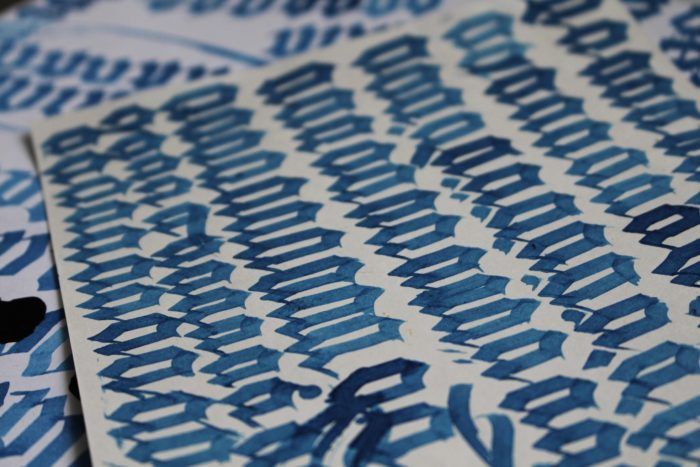
Modern calligraphy — i.e. the current styles most people focus on in the Western World — was rebirthed in London back at the end of the 19th century.
The man responsible was Edward Johnston, who was studying manuscripts at the famous British Museum at the time.
After having his interested piqued by the lettering on the manuscripts he studied, he lead a calligraphy course in London and wrote an influential book on the subject too.
After that, calligraphy picked up more steam — particularly as the arts and crafts movement took hold across the USA and Europe in recent times.
And the rest, as they say, is history!
Calligraphy Styles
With such a huge range of cultures, languages and alphabets in our world, you won’t be surprised to hear that there are simply hundreds of different calligraphy styles.
Imagine the number of fonts you have on your computer — now imagine that for every language in the world!
And, of course, when you’re doing the calligraphy yourself, the only limit is your imagination.
But there are a few styles that are particularly popular and capture people’s imagination the most. Invariably, these are the most historic and often artistic of the calligraphic styles.
Chinese Calligraphy
Calligraphy is an important and highly revered art in China — it’s no wonder that it’s so famous and admired throughout the world!
In Mandarin, it’s known as Shūfǎ which means ‘the way of writing’.
There are 5 categories of Chinese calligraphy but the one most in use today is Kai calligraphy — or Kǎishū.
Also known as the traditional script, it was developed during the Imperial China period and made official in the 10th Century by Emperor Mingzong. There are cursive forms of it too.

Chinese calligraphy is generally always done with a brush, although pens are often used today.
Traditionally, these ink brushes would be made of bamboo and animal hair!
So what factors influence Chinese calligraphy?
- Brush size
- Brush shape
- Type of brush hair
- Ink color and density
- Amount of water used
- Paper texture
- Speed of writing
- Stroke order
Students of Chinese calligraphy learn their craft by copying texts and works by the masters — just like writing was learned in the old days!
Arabic Calligraphy
Arabic calligraphy is also known as Islamic calligraphy as so much of its history and development is based on the Qu’ran.
It’s not just Arabic that influences it either — old Ottoman and Persian writing styles are also involved.
The two major styles of Arabic calligraphy are Kufic and Naskh.
Kufic is the oldest and can be spotted by its more straight and angular style.
Naskh is more common since the emergence of the Qu’ran and can be spotted by its cursive style. It also serves as the foundation for the modern Arabic script.
Just like with Chinese calligraphy, Islamic calligraphy is typically learned by students copying the work of masters, particularly using excerpts from the Qu’ran.
It’s done using a pen made from bamboo called a qalam and although often inscribed on paper, also found on other materials — like coins, tiles and carpets.
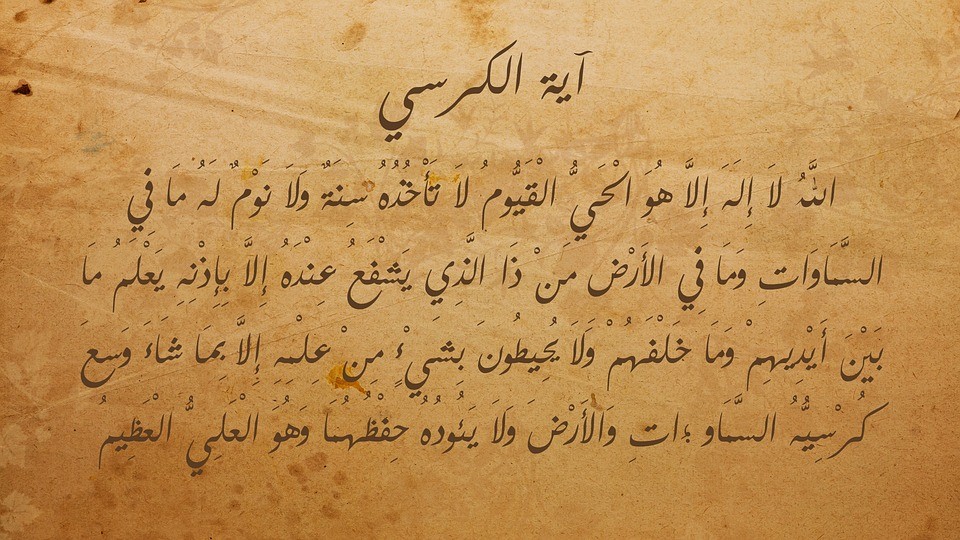
Japanese Calligraphy
Another highly admired Eastern style is Japanese calligraphy. Technique has been heavily influenced by developments in Chinese calligraphy, although obviously the script itself is different.
It was introduced in Japan in the 7th Century and is known as karayō.
Tools for Japanese calligraphy are known as the Four Treasures of the Study and include:
- Brush
- Inkstick
- Mulberry paper (washi)
- Inkstone
Copperplate Calligraphy
Back in the West, the calligraphy style that will be familiar to most people is Copperplate.
This was once called ‘English Roundhand’ although evolved to Copperplate when people started engraving it on — you guessed it — copper plates.
Copperplate calligraphy differs from most calligraphy in that it requires a thin, pointy pen nib, instead of the usual flat nib or brush.
This is why it has a narrower and more defined look compared to Chinese calligraphy, for instance.
English Roundhand first emerged in England during the 17th Century and is characterized by its flowing style and variance of thick and thin strokes.
It’s super common to see Copperplate calligraphy on wedding invitations nowadays.
Modern Calligraphy
So where does modern calligraphy fit into all of this? Chances are that if you want to start practicing calligraphy, it’s the modern version that’s caught your interest.
To point out the obvious, modern calligraphy is exactly that — modern.
It’s not an ancient form, nor is it tied to fine art or religious iconography.
That’s not to say that it’s not beautiful — it most certainly is!
Instead, it’s a more flexible and creative version of traditional Copperplate. You’ve got more freedom to write as you’d like to write, with the result looking more like gorgeous handwriting, rather than the usual thick and thin lines of the letterforms that you get with the more traditional work.
Here’s a introductory video on modern calligraphy from the brilliant The Postman’s Knock website:
There are a few principles to follow with modern calligraphy — at least at first. You can break the rules once you’ve mastered them!
- Apply pressure on the downstrokes
- Don’t apply pressure on the upstrokes
- Hold the pen at a 45° angle to the paper for best results
How to Do Calligraphy
OK, so know you’re clued in on the ins and outs of calligraphy, you’re probably wondering how to get started with your own practice.
Your first port of call should be to gather your supplies. Here are the essentials (you can buy more sophisticated and advanced tools later as you grow):
- Pens
- Paper
- Nibs
- Ink
The nibs are the most important tool for calligraphy as the shape of these dictate how the ink will look on the page.
There are a huge number of different nibs you can work with and we guarantee you’ll want to keep buying more and more as you get more into it!
We’ll be recommending the best calligraphy pens in a moment for you to get started with. They’re composed of both a nib and a nib holder.
As you become more confident, you might even want to try the traditional brush and ink that the ancient calligraphers used to use.

Good quality paper is also key to good calligraphy, but when you’re first starting out you may want to try using thin, transparent paper. This way, you’ll be able to trace over calligraphy worksheets for practice with them.
Some calligraphy pens come with their own ink cartridges but others will require you to buy your own ink to use with them.
When it comes to ink, you have two choices — normal dye-based ink and pigment based ink.
Pigment based ink is thicker and lasts longer than dye-based and is usually used for important documents and artwork. It can’t be used in a normal fountain pen though — you’ll have to use a specialist dip nib pen.
Here’s a great guide on the different types of calligraphy inks.
Some people recommend that you start off just using a normal pen to try and practice the letterforms but we think that you should start off early with calligraphy pens and inks.
Mastering how to hold and manipulate the nib is the key to mastering calligraphy so you might as well jump in at the deep end. You already know how to write using a ball point pen!
Calligraphy Worksheets
While calligraphy doesn’t require any artistic skills to get started with, it does require plenty of patience and practice.
You won’t be making beautiful inscriptions on your first day, unfortunately!
This is where calligraphy worksheets come in handy.
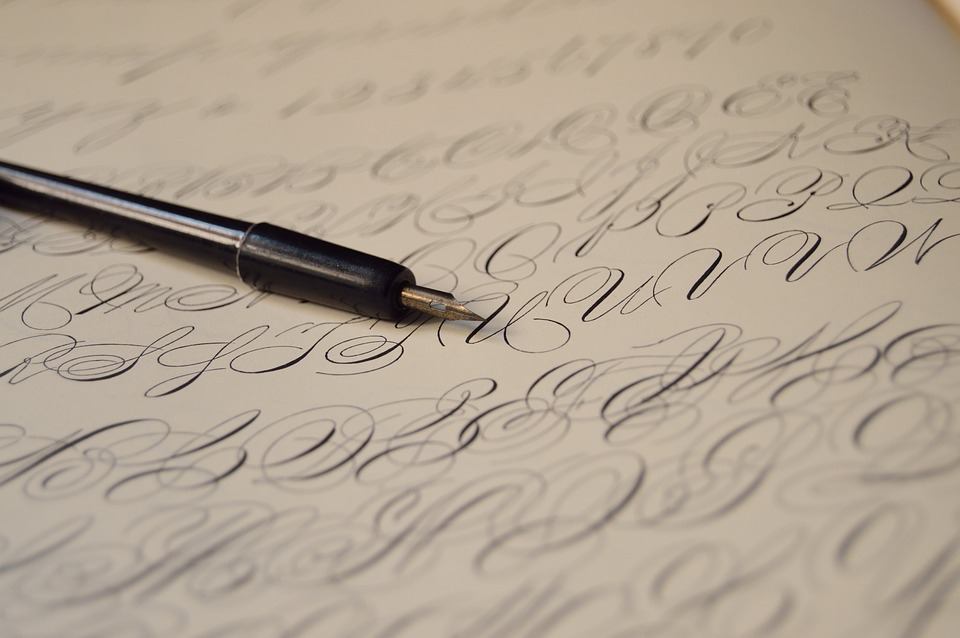
You can often find these for free or for a small fee online. You’ll simply need to download and print them off and trace over the top of them.
Doing this over and over again (don’t worry, you can download different sheets so you don’t get bored!) will ensure that you begin to master the different strokes and learn how to hold the pen for the best results.
We’ve found that half the effort of calligraphy is actually muscle memory, so the more you practice, the better you’ll be!
Here are a few places where you can find calligraphy worksheets and workbooks:
Calligraphy Pens
There are two different styles of calligraphy pens:
- Dip nib pens
- Fountain cartridge-filled pens
Dip nib pens are the gold standard for calligraphy, but they do take some time and practice to get used to. And as you have to actually dip them in the ink, things can get pretty messy!
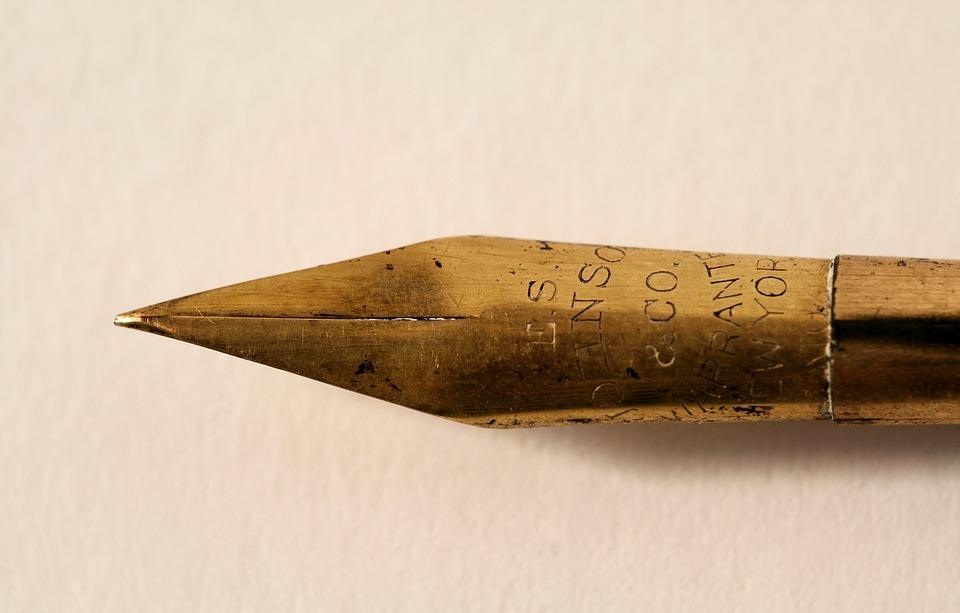
You’ve got a lot of freedom to choose different styles of nibs with dip nib pens, hence why more experienced and professional calligraphers prefer them.
When it comes to the nib of your dip pen, you can choose between italic and flex.
The flex nibs are the most popular for modern calligraphy as they allow you plenty of flexibility in line creation. Italic nibs, on the other hand, are blunter and inflexible — better for Gothic styles!
The Best Calligraphy Nib for Beginners
If you want to dive straight into a dip nib, then good for you!
We’d recommend the Zebra Comic G Model Chrome Pen Nib.
It’s flexible, sturdy and can handle a lot of ink — ideal for beginners just feeling their way out with calligraphy.
We’ve all broken nibs before in our time — usually from putting too much pressure on those downward strokes. These Zebra G nibs are strong and able to withstand plenty of pressure (plus there’s 10 in the pack so no harm, no foul)!
They’re also very reasonably priced and ideal for both copperplate and modern calligraphy. Just remember you’ll need to buy a nib holder to go with it — we recommend this one.
Cartridge pens, in contrast to nib pens, are easier to use and certainly cleaner. Many beginners choose to start with these.
There are limitations in the type of nibs you can buy with these pens, however. Plus, you can only use the dye-based cartridge ink as pigment based ink tends to dry them up and ruin them.
The Best Calligraphy Pens
Best Cartridge Pen: ZenZoi Bamboo Fountain Pen Writing Set Case
This beautiful calligraphy pen is 100% handcrafted from bamboo, for smooth flowing scripts.
It’s also cartridge based, so clean and convenient, and ideally suited to beginners.
Pros
- Writes very smoothly and evenly
- Not too difficult a learning curve
- Comes with matching bamboo gift case
- Works with most types of generic ink cartridges
- 100% money back guarantee
- Lightweight and easy to handle
- Flexible nib for calligraphy
- Sturdy nib that won’t break under pressure
Cons
- Doesn’t have the same creative freedom as a dip nib pen
- Relatively expensive
Best Dip Pen and Ink Set: Daveliou Calligraphy Pen Set
If you want to dive right into dip nib pens, this exquisite set from Daveliou should be on your agenda.
It’s composed of 12 pieces — 5 pieces, 5 nibs and 2 nib holders — in a beautiful presentation case.
Pros
- Sturdy and well crafted, flexible nibs
- Range of nib sizes and ink colors included — great for experimenting!
- Makes for smooth and controlled calligraphy
- Nib holders are comfortable to hold
- Easy to clean
- Inks are color brilliant with durable lightfastness
- 1 year, 100% guarantee
- Suitable for all experience levels
Cons
- A bit of a learning curve for beginners
- 5 different nibs and 5 different inks is a lot for a newbie calligrapher — could be overwhelming!
Best Dip Pen Set for Beginners: Speedball 6-Nib Calligraphy Lettering Set
If you’re on a budget and looking for a basic dip pen set, then this Speedball set is all you need.
It’s not fancy — it comes with a plastic nib holder and 6 nibs — but it’s perfect for people just starting out with their calligraphy. Great price too!
Pros
- Range of nib sizes and shapes: c1, c2, c3, c4, 100 and 152
- Cheap
- Flexible and writes reasonably smoothly
- Easy to use and clean
- Good starter set
Cons
- You’ll need to buy ink separately
- Can be a little scratchy at first
- Not the most comfortable nib pen to hold onto
Best Brush Pen Set: Tombow Fudenosuke Brush Pen
We recently found this brush pen set and fell in love — it’s great for beginners or for anyone looking to experiment with a calligraphy brush, instead of the usual nib.
You can easily create extra-fine, fine and medium strokes with the flexible brush tip, and it’s super clean and convenient to use. Ideal!
Pros
- Cheap
- Can create different strokes easily with a change in pressure
- Pigmented black ink is color brilliant
- Lightweight and easy to handle
- Comes with two pens: one soft and one hard tip
- Made from recycled, polypropylene plastic
- Flexible nibs for super smooth writing
- Excellent for beginner calligraphers
Cons
- Only available for Amazon Prime customers
- Not refillable 😔
Calligraphy Fonts: Where to Find Them
If you’ve got this far through this ultimate calligraphy guide, you might have come to the realization that creating calligraphy letters might be a little too much work for you.
Let’s face it, if you’re not committed to regular practice, you’re not going to progress very far with it.
In which case, it might be best for you to look for pre-made calligraphy fonts instead for your craft projects.
There are plenty of typography websites and blogs online that offer free calligraphy fonts for download — and who can argue with that!
Here are a few of our favorites:
Plus, you can find a whole load of calligraphy letters and resources on Pinterest. Here’s our latest board, for instance:
Phew — now that’s absolutely everything you need to know about getting started with calligraphy!
Any questions?

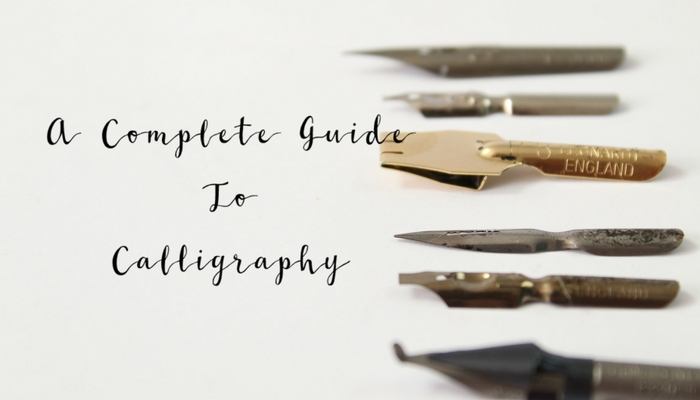
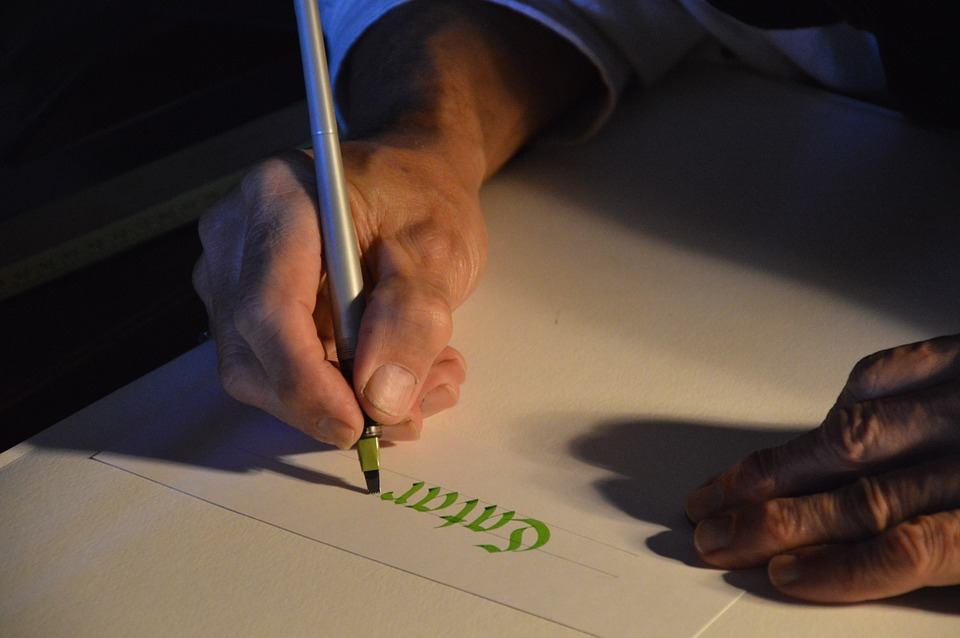
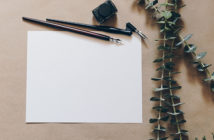



No Comments
Pingback: Mrs Messy tries calligraphy - Jolly Volley Vintage